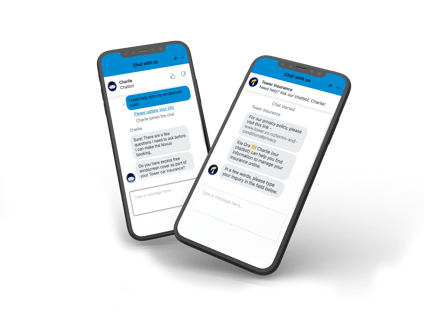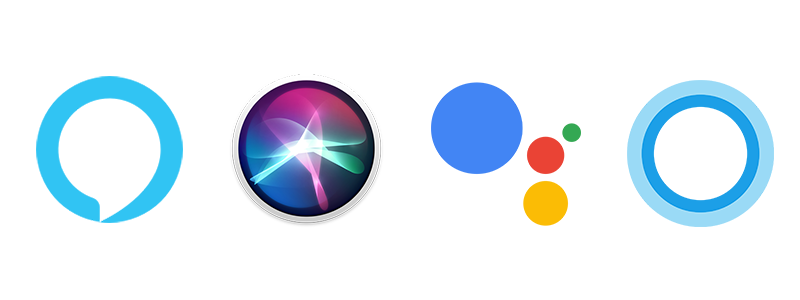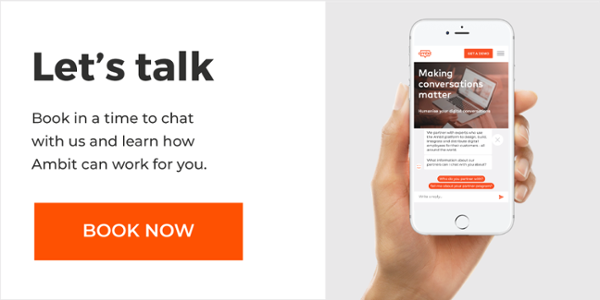Virtual agents, AI-powered virtual assistants, intelligent chatbots, digital sales and support bots... explained
Intelligent virtual agents (or digital employees as we refer to them at Ambit,) are computer programs that leverage a mix of programmed rules and conversational artificial intelligence in order to offer a simple service or provide basic help.
Here's an index of the various aspects we'll explore:
-
- What are Digital Employees?
- Digital Employee Benefits
- How Digital Employees work
- Digital Employee Use Cases
- Digital Employees for Employee Support
- Setting up a Digital Employee
- Training a Digital Employee
- Testing a Digital Employee
- Responding to enquiries across channels
- The Digital Employee Market
- How can a Digital Employee drive revenue for my business?
- How can a Digital Employee reduce my costs?
- How much do Digital Employees cost?
Want to cut straight to the chase?
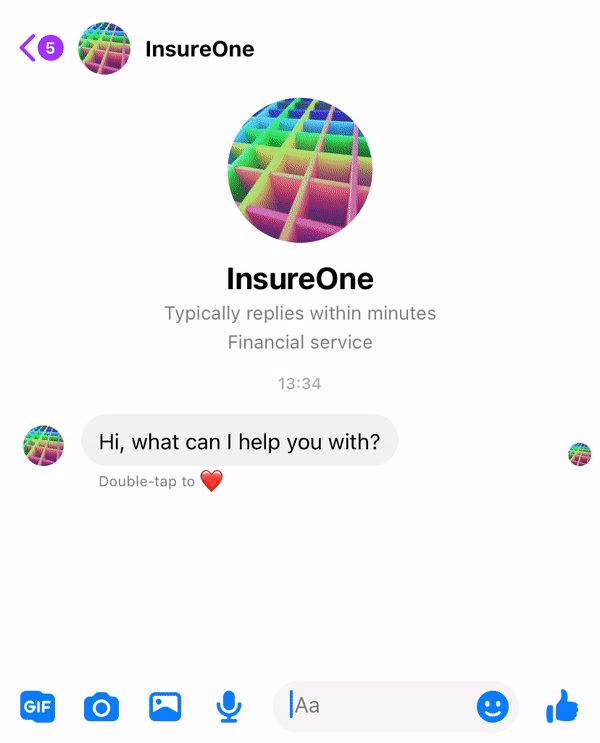
An example of a digital employee guiding a user through the process of claiming roadside assistance.
What are Digital Employees?
Digital employees fall into a larger category of online services including chatbots, voice bots, and even interactive voice response systems.
Think of a digital employee like a digital assistant (such as Siri, Alexa or Google.) In particular, think about the agent as a way for your business to serve users - in particular, customers.
Digital employees are predominantly used by companies who serve a large customer base handling volumes of customer enquiries, or who have a large number of internal employees to support as a concierge bot or HR bot for example. They act as a key tool to leverage automated conversations to solve enquiries and allow for real people to manage more complicated matters that need to be resolved.
Although the terms digital employees, digital assistants, chatbots, and AI are often used interchangeably, it’s important to understand that they are not the same thing.
A chatbot is a simplified, FAQ-style answering machine that knows how to respond to specific questions and keywords. Digital employees on the other hand, are able to understand on a deeper level what a human wants to know the answer to, plus the intent behind it.
Digital Employee Benefits
Digital employees provide a number of benefits to the businesses that use them. There are three specific reasons why a company might use one:
1. Consistent, high-quality and clear answers
You can guarantee that your digital employee’s answers will be on-brand, correct and always polite. Digital employees help to delight customers and increase organisational efficiency without ever having a moment off.
2. Give your human agents their time back
Digital employees free up your human agents' time by handling simple and often low-value requests, most of which have straightforward answers and are asked most frequently. These are the types of challenges solved by automation.
The main point to note is that digital employees are there to complement your human agents, not replace them.
At Ambit, we’ve developed digital employees that make the process to hand-off from AI to human fast, easy and seamless - so that the moment you have a customer on the line that needs human assistance, you can hand them off to a human agent seamlessly.
3. Cut down Response Time
No one likes having to wait or be on hold. With a digital employee, you can delight your customers by responding quickly and help them find the answers they need, fast.
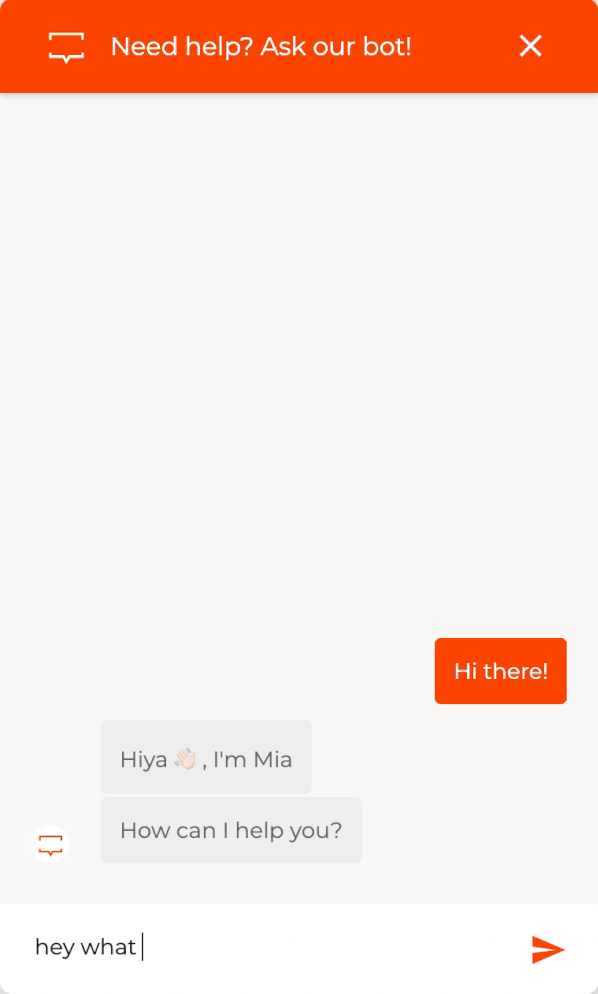 A digital employee assisting a customer through guided selling.
A digital employee assisting a customer through guided selling.
How Digital Employees work
Typically, most digital employees require that the businesses who use them map out specific workflows and conversations that the digital employee needs to be able to manage according to the user or customer journey.
When a customer engages with the digital employee, the digital agent uses natural language processing in order to identify the keywords that the human customer has used to ask their question. From there, the digital employee then engages with its scripted responses internally to then give the customer the best possible answer to their question.
More advanced digital employees are able to move beyond simple keyword identification and use powerful conversational AI to understand the context and the intent throughout the conversation.
This is where the key division point of chatbots and digital employees is even more evident - chatbots being better at identifying simple keywords, while conversational AI is able to take and understand a customers’ intentions at a deeper level.
This is where Ambit’s powerful technology stands out. Our team has invested thousands of hours into making sure that no matter the situation, your digital employee will be able to draw upon answers from your customer support knowledge base with ease, and delight your customers with fast solutions.
Take a retail example, where a customer is shopping on a fashion website and makes a comment about liking a particular brand. An advanced conversational AI would be able to make recommendations to the customer about similar products that might be more affordable as something for them to consider.
Similarly, if more customers make the same requests, this allows for the conversational AI to learn over time what questions are being asked most of the time, and subsequently, be able to continuously improve its responses.
Digital Employee Use Cases
Digital Employees for Customer Service
The most popular use case for a digital employee is to assist with customer support. To narrow it down even further, a digital employee is a key tool in being able to answer customer questions that are most frequently asked. This in turn is what allows for real human agents to be able to get back their time to focus on higher complexity questions, and let a digital employee do the heavy lifting on lower-value requests.
The facts back it up too. At Ambit, we’ve seen clear evidence that businesses with digital employees are able to reduce the hours spent on customer requests significantly.
Take one of our clients, Tower Insurance, who were able to reduce the time it took to resolve a customer query from 30 minutes down to 3.
Digital Employees for Marketing Automation
The second most popular use case for a digital employee is that of lead qualifying and triage.
You’ve most likely encountered at least one variety of this - in which a digital employee asks you for some details in order for them to pass you onto the right person who can help you out.
This assists customers in finding the resolution they are after quickly, as well as helping businesses to pass on low-value requests to be handled by the digital employee. This means that your human staff can be used to deliver the most value to customers who have higher-complexity questions, and mean that the cost to serve them individually is much lower when a digital employee is able to handle the rest.
Digital Employees for Employee Support
Customer support is not the only area in which a digital employee can shine.
More and more, digital employees are being used to help human employees within a business to complete day-to-day tasks, getting started with onboarding, or even just resetting a password.
Think about this the same way if you changed departments within your business - having a digital employee able to answer key questions that you had around particular processes, where to find certain information and so on can be easily programmed into a digital employee so that you are able to ask the digital employee all your questions and not necessarily have to bug a co-worker every 2 minutes.
Remember, the digital employee’s scope and breadth of understanding needs to be informed by relevant natural language processing and the data and models which power it.
As such, this is why we at Ambit are continuously working to find the best ways in which our digital employees are constantly improving to deliver and meet customer expectations and needs by always enhancing our technology.
Setting up a Digital Employee
At Ambit, we know the customer pet peeve that deploying a digital employee can be frustrating if it requires months of time to train and launch it.
Fortunately, this is again where the difference between a chatbot and digital employee is made clear. We launched Noel Leeming’s digital employee, Nola, in just 12 days and saw how it resulted in 2.2x more upsells. It was fast to do, and was constantly improving every time customers asked her a question.
Training a Digital Employee
At Ambit, we take an alternative approach to training. Our specialist conversation designers base our digital employees on your existing customer support knowledge base using the Ambit Voice of Customer Review tooling.
No more guessing intents or utterances to get started. Your customer's voice is used to create the conversations from their voice directly into Ambit, taking personalisation and understanding of customer behaviour to the next level.
This drastically speeds up training and time to value of the digital employees performance.
Ambit’s technology bases the digital employee’s “knowledge” based on your existing customer engagement - be that emails, voice calls, chat or any data from recorded customer data anonymously. Through this, it streamlines the process significantly eliminating the need to from scratch, using industry trend data or working through what your expert team thinks is the place to start. Ambit uses your customers voice directly together with your brand, and creates natural conversations users will feel as familiar as talking to a friend.
Testing a Digital Employee
Once your digital employee is built and ready, this is where testing it out internally or on a small group of customers becomes essential.
Then, you can see if there are any bugs that need to be fixed, and that it is working as it should be. Testing on customers will allow you to zone in and identify any areas that need work, and also that your digital employee is able to answer their key questions the moment they need an answer.
Responding to enquiries across channels
In many cases, digital employees have now begun to incorporate the ability to resolve customer, employee, or corporate work requests across multiple channels, including voice, text, and chat, as well as through digital assistants, multi-channel applications, and email.
There are a lot of instances in which digital employees have expanded their abilities in which to resolve customer, employee or corporate requests across multiple channels, including voice, text and chat.
The most efficient conversational AI platforms are able to connect with back-end systems so that when a customer or user asks the digital employee for help, it can connect into your CRM or ERP, as an example.
At Ambit, integrations make up a large chunk of the work that we do and this is so that you are able to customise and centralise your customer support requests, triage responses from channels, and ensure that all the relevant communication is occurring in the channels that matter the most.
The Digital Employee market
Particularly with the rise of COVID, this past year alone has seen a surge in digital employee popularity - reaching the number 1 spot amongst several industries that cite the fastest-growing technologies.
You’ve most likely heard of some of these key assistants, including Amazon's Alexa, Apple's Siri, Microsoft's Cortana, Google's Assistant, as well as Facebook's M and Samsung's Bixby.
So why the sudden interest now?
If you’ve ever asked Siri to remind you to do something, or asked Google Assistant to tell you a joke, this has popularised the idea of being able to use a digital employee as an assistant in which to help us complete day-to-day tasks. Similarly with a digital employee, they are designed with the intention of helping companies to do their work in a smarter, not harder way.
In short, they make it easier for businesses to scale, all the while enabling their humans to do the high-level work, and automating conversations at scale.
How can a Digital Employee drive revenue for my business?
If your business gets inbound customer requests, a digital employee is the perfect way to increase your marketing qualified lead (MQL) to sales qualified lead (SQL) rate.
As well as this, a digital employee can help improve conversion rates on your website by allowing customers the ability to convert on every single page of your website, not just a specific landing page in which they would download an eBook, for example.
So what do we mean by improving your conversion rate?
Think about it from a lead to customer perspective; you have a potential customer who is browsing your website trying to see if your product fits their needs.
By engaging with your digital employee, perhaps requesting to get a free content offer, the digital employee collects relevant information from your prospects, and can use this to then show them more personalised suggestions. In turn, this makes it easier for sales to know more about the customer in question and if they approach them, able to tailor their responses a whole lot better in a way that is actually relevant to their needs.
How can a Digital Employee reduce my costs?
More than you might expect! Our customers across the retail, energy, utilities, KiwiSaver and financial services sectors, have seen a significant reduction in admin time for the human staff, increase the quality for their customer service support, and give back more time to their human agents to allow them to handle more complicated inquiries.
Just some of the impressive stats we’ve seen since implementing digital employees for our customers includes:
-
- A 39% increase in after-hours conversations being handled with ease (Noel Leeming)
- A 97% understanding rate from the digital employee (Mercer Financial Services)
- A reduction of handling a customer query from 30 minutes to 3 (Tower Insurance)
- Handling over 40% of customer requests from outside normal working hours (Mercer Financial Services)
How much do Digital Employees cost?
Aaah the million dollar question!
At Ambit, we believe in fit for purpose technology, which means we want to ensure that you’re getting the right solution that is right for your business and its needs.
To get a personalised quote based on your use case and customer insights, get in touch with our team.

